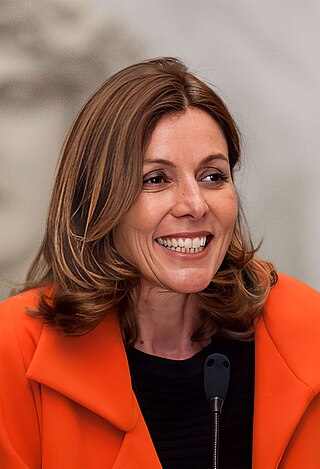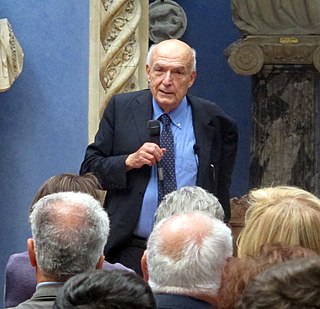
The Sistine Chapel is a chapel in the Apostolic Palace, in Vatican City and the official residence of the pope. Originally known as the Cappella Magna, the chapel takes its name from Pope Sixtus IV, who had it built between 1473 and 1481. Since that time, the chapel has served as a place of both religious and functionary papal activity. Today, it is the site of the papal conclave, the process by which a new pope is selected. The fame of the Sistine Chapel lies mainly in the frescoes that decorate the interior, most particularly the Sistine Chapel ceiling and The Last Judgment, both by Michelangelo.

Post-Impressionism was a predominantly French art movement that developed roughly between 1886 and 1905, from the last Impressionist exhibition to the birth of Fauvism. Post-Impressionism emerged as a reaction against Impressionists' concern for the naturalistic depiction of light and colour. Due to its broad emphasis on abstract qualities or symbolic content, Post-Impressionism encompasses Les Nabis, Neo-Impressionism, Symbolism, Cloisonnism, Pont-Aven School, as well as Synthetism, along with some later Impressionists' work. The movement was led by Paul Cézanne, Paul Gauguin, Vincent van Gogh and Georges Seurat.

The Vatican Museums are the public museums of the Vatican City. They display works from the immense collection amassed by the Catholic Church and the papacy throughout the centuries, including several of the most renowned Roman sculptures and most important masterpieces of Renaissance art in the world. The museums contain roughly 70,000 works, of which 20,000 are on display, and currently employ 640 people who work in 40 different administrative, scholarly, and restoration departments.

The Apostolic Palace is the official residence of the pope, the head of the Catholic Church, located in Vatican City. It is also known as the Papal Palace, the Palace of the Vatican and the Vatican Palace. The Vatican itself refers to the building as the Palace of Sixtus V, in honor of Pope Sixtus V, who built most of the present form of the palace.

The Phillips Collection is an art museum founded by Duncan Phillips and Marjorie Acker Phillips in 1921 as the Phillips Memorial Gallery located in the Dupont Circle neighborhood of Washington, D.C. Phillips was the grandson of James H. Laughlin, a banker and co-founder of the Jones and Laughlin Steel Company.

The Neue Pinakothek is an art museum in Munich, Germany. Its focus is European Art of the 18th and 19th centuries, and it is one of the most important museums of art of the nineteenth century in the world. Together with the Alte Pinakothek and the Pinakothek der Moderne, it is part of Munich's "Kunstareal".

The Borgia Apartments are a suite of rooms in the Apostolic Palace in the Vatican, adapted for personal use by Pope Alexander VI. In the late 15th-century, he commissioned the Italian painter Bernardino di Betto (Pinturicchio) and his studio to decorate them with frescos.
The Thannhauser Galleries were established by the Thannhauser family in early 20th century Europe. Their cutting-edge exhibitions helped forge the reputations of many of the most important Modernist artists.
This is an index of Vatican City–related topics.

Lizzie Plummer Bliss, known as Lillie P. Bliss, was an American art collector and patron. At the beginning of the 20th century, she was one of the leading collectors of modern art in New York. One of the lenders to the landmark Armory Show in 1913, she also contributed to other exhibitions concerned with raising public awareness of modern art. In 1929, she played an essential role in the founding of the Museum of Modern Art. After her death, 150 works of art from her collection served as a foundation to the museum and formed the basis of the in-house collection. These included works by artists such as Paul Cézanne, Georges Seurat, Paul Gauguin, Henri Matisse, Pablo Picasso and Amedeo Modigliani.

The Galleria d'Arte Moderna is a modern art museum in Milan, in Lombardy in northern Italy. It is housed in the Villa Reale, at Via Palestro 16, opposite the Giardini Pubblici. The collection consists largely of Italian and European works from the 18th to the 20th centuries.

The Vatican Historical Museum is one of the sections of the Vatican Museums. It was founded in 1973 at the behest of Pope Paul VI, and was initially hosted in environments under the Square Garden. In 1987 it was moved to the main floor of the Apostolic Palace of the Lateran and opened in March 1991.

The Paul Gauguin Interpretation Centre is located at Le Carbet in Martinique and is dedicated to famous French painter Paul Gauguin's stay on the island in 1887.

Vahine no te vi is an 1892 painting by Paul Gauguin, currently in the collection of the Baltimore Museum of Art. It is one of the earliest of about seventy paintings he produced during his first visit to Tahiti and is one of many works of modern art in the museum's Cone Collection.

The Museo di Roma is a museum in Rome, Italy, part of the network of Roman civic museums. The museum was founded in the Fascist era with the aim of documenting the local history and traditions of the "old Rome" that was rapidly disappearing, but following many donations and acquisitions of works of art is now principally an art museum. The collections initially included 120 water-colours by the nineteenth-century painter Ettore Roesler Franz of Roma sparita, "vanished Rome", later moved to the Museo di Roma in Trastevere.

Barbara Jatta is an Italian art historian who has been the director of the Vatican Museums since June 2016.

Antonio Paolucci is an Italian art historian and curator. In 2007 he was appointed director of the Vatican Museums by Pope Benedict XVI, a post he held until 2017 when he was replaced by his former deputy, Barbara Jatta. Throughout his career Paolucci has worked also in Florence, Venice, Verona, Mantua and other Italian cities in national art and cultural institutions. He has written many books and articles on art history and made television appearances on a variety of programs to explain and promote art. He is the recipient of numerous awards for his work.

The Goulandris Museum of Contemporary Art is a modern art museum in Eratosthenous Street, Pangrati, Athens, Greece, opened in October 2019. It displays many of the works amassed by shipowner Basil Goulandris and his wife Elise Karadontis, who died in 1994, with an art collection valued at US$3 billion.

Anima Mundi is a museum of ethnological art and artefacts in the Vatican City. It is part of the Vatican Museums.
Gianluigi Colalucci was an Italian Master Restorer and academic most known for being the chief restorer of the Sistine Chapel in the Vatican City from 1980 to 1994.




















